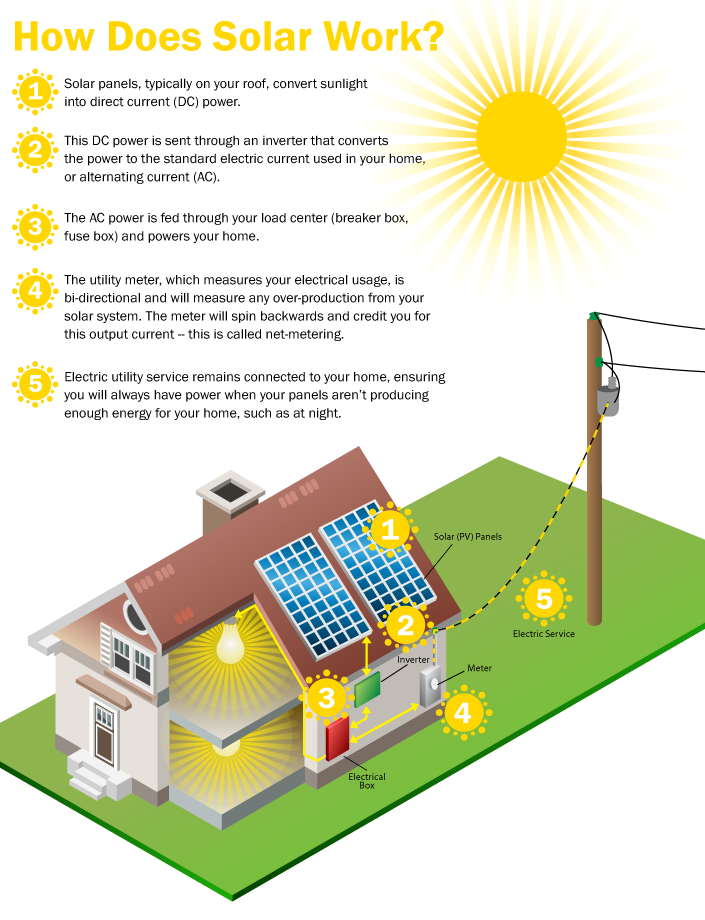How Solar Power Works
Solar panel systems, also known as photovoltaic or PV systems, convert sunlight into electricity using a chemical process similar to the photosynthesis effect of the Sun on plants and trees. Solar panels can produce electricity on cloudy days, but not as much as on a sunny day. If you pay more than $100 each month in utility bills, you can likely save money with the renewable power from the Sun.

Want a solar panel system at the lowest cost? START SOLAR DESIGN
To produce power, solar cells (usually 60, 72, 96 or 144) are interconnected, encased in tempered glass and bordered by an aluminum frame to form a solar panel. For the typical home, about 10 to 20 solar panels are cabled together to create what is known as an array. The solar array should provide enough power for a typical household. As depicted in this inforgraphic, the key components of a solar electric system include:
1. Solar Array
Converting sunlight to electricity, solar panels are typically mounted to the roof of a residence or ground mounted close to the building.
Solar arrays are best mounted at a fixed angle facing south to capture the most sunlight over the course of a day. However, they can produce plenty of power facing East or West.
Because of their modularity, solar panel systems can be designed to meet most power needs, no matter how large or how small. You can connect solar panels to an electric utility system (grid-connected), or they can stand alone (off-grid) with an optional battery storage system.
2. Inverter
The inverter (or power converter) converts the direct current (DC) power from the panels to alternating current (AC) used in your home. Some of the newest PV modules include micro-inverters that are integrated at the factory, so no additional equipment is needed.
3. Electrical Panel
Power travels from the inverter to the breaker box or electrical service panel. The power from the electrical panel is then distributed throughout the home or back to the utility grid for use.
4. Utility Meter
When excess power is produced by the solar system (for instance during a work day at a residence or over the weekend at a business), the electrical power will flow into the grid through the electric meter. This will cause the meter to run backwards, generating a credit with the utility company that can be used to offset future usage. The arrangement is known as net metering and is usually mandated by the State Public Utility Commission.
5. Utility Grid
In most installations, the property will be grid-connected and have PV solar power working together. The local utility will provide power when demand exceeeds solar production and at night.
How to Get Started
Now that you understand the basics of how solar power works, follow this link to learn how to buy solar panels.
